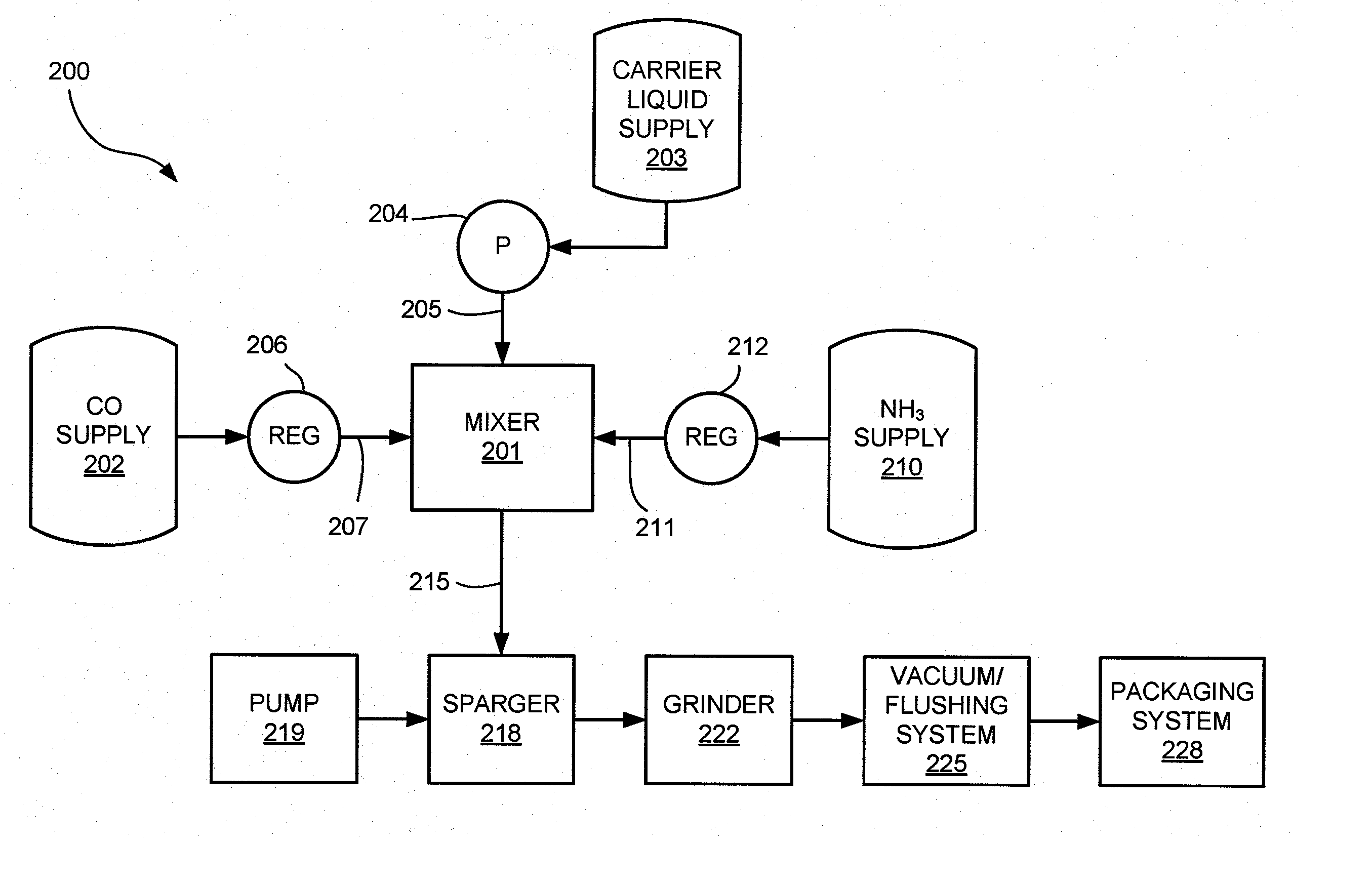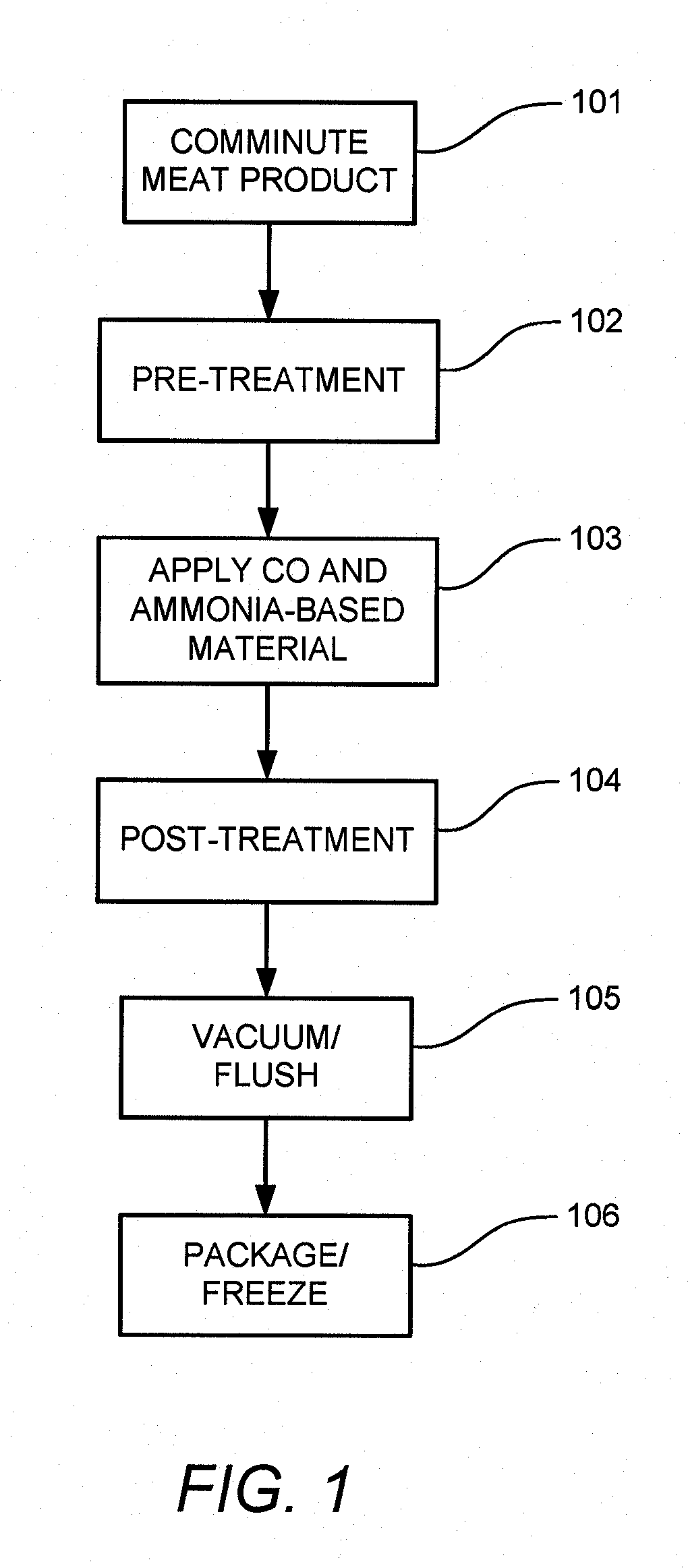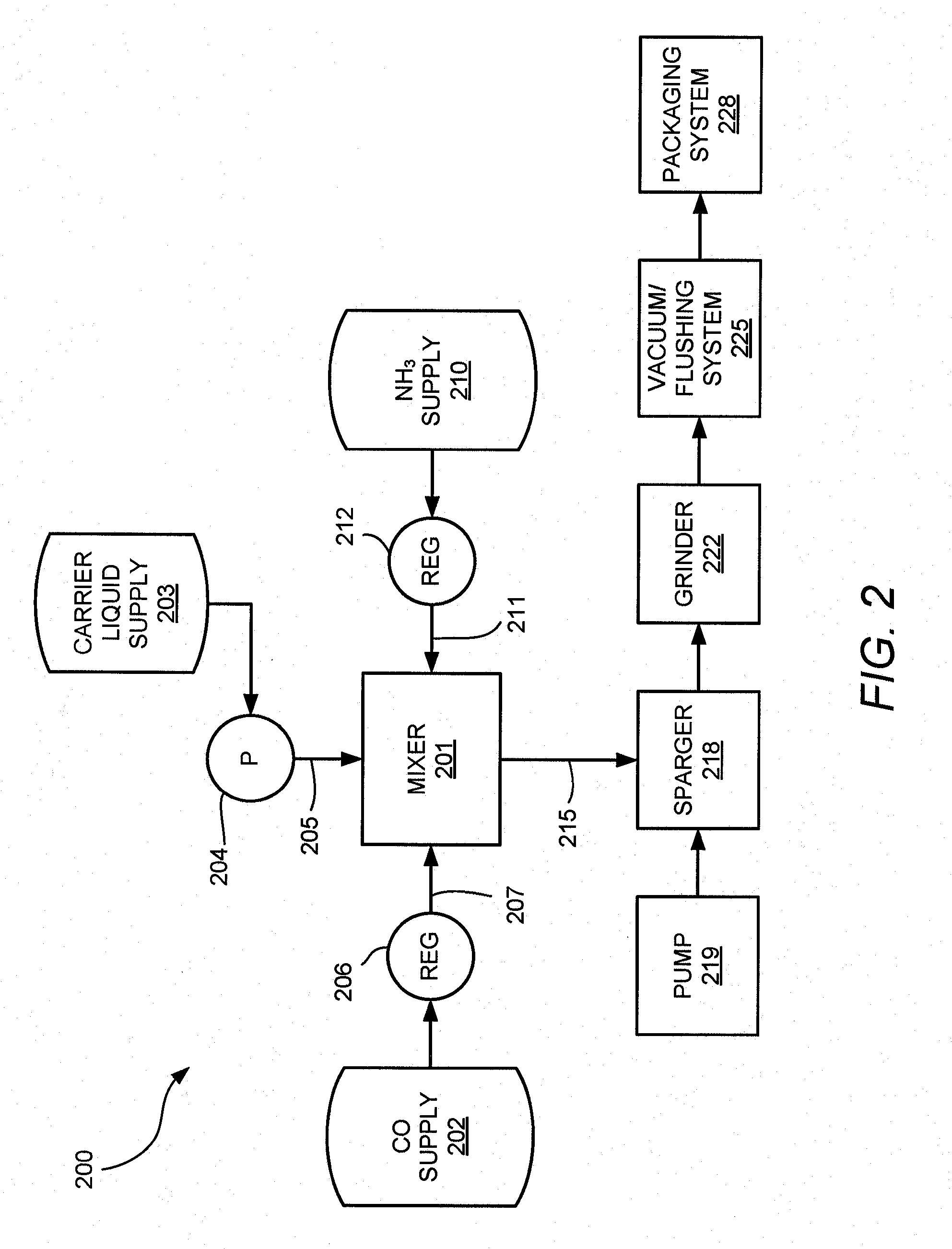Method for Applying Carbon Monoxide to Meat Products
a carbon monoxide and meat technology, applied in the field of meat processing operations, can solve the problems of unsuitable environment for aerobic microbes, reduced oxygen content, and certain problems associated with meat products treated with carbon monoxide, so as to reduce the effect of carbon monoxide, mask spoilage, and reduce the effect of color chang
- Summary
- Abstract
- Description
- Claims
- Application Information
AI Technical Summary
Benefits of technology
Problems solved by technology
Method used
Image
Examples
Embodiment Construction
[0019]FIG. 1 will be used to describe various treatment methods within the scope of the invention. FIGS. 2 and 3 will be used to describe apparatus that may be used to treat meat products according to the invention and to describe further variations on the treatment methods shown in FIG. 1.
[0020] Referring to FIG. 1, a treatment process embodying the principles of the present invention may include first comminuting a meat product as indicated at process block 101 to produce a highly comminuted meat product. The process shown in FIG. 1 also includes a pre-treatment as indicated at process block 102 prior to the application of carbon monoxide and ammonia-based pH increasing material as shown at process block 103. FIG. 1 also shows a post-treatment at process block 104 after the application of carbon monoxide and ammonia-based pH increasing material. After the post-treatment, a vacuum / flushing operation is performed on the treated meat product as indicated at process block 105 and the...
PUM
 Login to View More
Login to View More Abstract
Description
Claims
Application Information
 Login to View More
Login to View More - R&D
- Intellectual Property
- Life Sciences
- Materials
- Tech Scout
- Unparalleled Data Quality
- Higher Quality Content
- 60% Fewer Hallucinations
Browse by: Latest US Patents, China's latest patents, Technical Efficacy Thesaurus, Application Domain, Technology Topic, Popular Technical Reports.
© 2025 PatSnap. All rights reserved.Legal|Privacy policy|Modern Slavery Act Transparency Statement|Sitemap|About US| Contact US: help@patsnap.com



